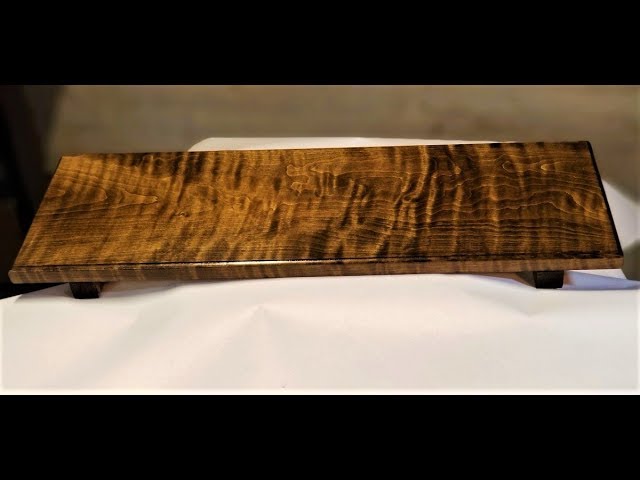
Wood possesses an inherent beauty that captivates with its natural variations in grain, color, and texture. However, to truly make wood “pop,” it requires more than just selecting the right species. It involves understanding the nuances of wood and applying finishing techniques that enhance its inherent charm. This article delves into the art of making wood “pop” by exploring various techniques, from understanding wood grain and color to choosing the right sealants and topcoats.
This comprehensive guide will walk you through each step, providing valuable insights and practical tips to elevate your woodworking projects to a whole new level. By mastering these techniques, you’ll be able to transform ordinary wood into stunning works of art that showcase its natural beauty.
Understanding Wood Grain and Color
The foundation of making wood “pop” lies in appreciating its natural grain patterns and color variations. Each species of wood exhibits unique characteristics, influencing the overall aesthetic appeal.
Recognizing Grain Patterns
Grain patterns are the intricate lines and swirls that run through wood, resulting from the arrangement of individual fibers. Some woods, like oak, feature prominent, interlocking grains, while others, like cherry, display a more subtle, flowing pattern. Understanding these variations allows you to choose finishing techniques that complement the specific grain structure.
Appreciating Color Variations
Wood color can range from light and creamy hues to rich, deep tones. Factors such as species, age, and environmental conditions influence the final color. Some woods, like maple, are known for their pale, almost white appearance, while others, like mahogany, boast a warm, reddish-brown hue. Recognizing these variations helps you select stains or dyes that enhance the wood’s natural beauty without overpowering it.
Enhancing Wood with Stains and Dyes
Stains and dyes offer a powerful way to accentuate what makes wood pop. They penetrate the wood fibers, altering its color and bringing out its inherent character.
Choosing the Right Stain
Stains come in various shades and finishes, allowing you to customize the look of your project. Oil-based stains penetrate deeply, resulting in rich, even color, while water-based stains offer a lighter finish with less odor. Consider the wood species and desired aesthetic when selecting a stain.
Applying Stains Effectively
Applying stain evenly is crucial for achieving a professional-looking finish. Use a brush or rag to apply thin coats, working with the grain of the wood. Allow each coat to dry thoroughly before applying the next. Remember to test the stain on a scrap piece of wood first to ensure you achieve the desired color.
Choosing the Right Sealants and Topcoats
Sealants and topcoats protect the wood’s surface from moisture, scratches, and wear and tear while enhancing its beauty.
Understanding Different Types
Polyurethane, lacquer, varnish, and shellac are common sealants and topcoats. Each offers unique properties in terms of durability, gloss level, and application method. Polyurethane provides a durable, protective finish, while lacquer offers a high-gloss sheen. Varnish creates a warm, amber tone, and shellac produces a traditional, antique look.
Selecting the Best Fit
The choice of sealant or topcoat depends on the project’s requirements and desired aesthetic. For furniture exposed to heavy use, opt for a durable polyurethane finish. For delicate pieces or those requiring a high-gloss sheen, lacquer is an excellent choice. Varnish adds warmth and depth to wood, while shellac offers a classic, vintage appeal.
Protecting and Preserving Wood Finish
Maintaining the beauty of your wood finish requires proper care and protection.
Regular Cleaning
Dust and debris can dull the shine of your wood finish. Regularly wipe down surfaces with a soft cloth dampened with mild soap and water. Avoid using abrasive cleaners or harsh chemicals, as they can damage the finish.
Protecting from Sunlight
Prolonged exposure to sunlight can fade and discolor wood finishes. Place furniture away from direct sunlight or use curtains or blinds to filter UV rays.
Addressing Scratches and Dents
Minor scratches and dents can be repaired with wood filler and sanding. For deeper damage, consult a professional woodworker for restoration services.
Achieving a Stunning “Pop” in Woodworking Projects
By combining the principles outlined above, you can achieve stunning results in your woodworking projects.
Selecting the Right Wood Species
Choose wood species known for their beautiful grain patterns and color variations. Consider factors like durability, workability, and desired aesthetic when making your selection.
Enhancing with Finishing Techniques
Experiment with different stains, dyes, sealants, and topcoats to find combinations that bring out the best in your chosen wood. Don’t be afraid to try new techniques and explore creative possibilities.
Conclusion
Making wood “pop” is a rewarding journey that involves understanding its natural beauty and applying finishing techniques that enhance its inherent charm. By mastering the art of selecting the right wood species, stains, sealants, and topcoats, you can transform ordinary wood into stunning works of art. Remember to prioritize proper care and protection to ensure your finished projects retain their beauty for years to come.
